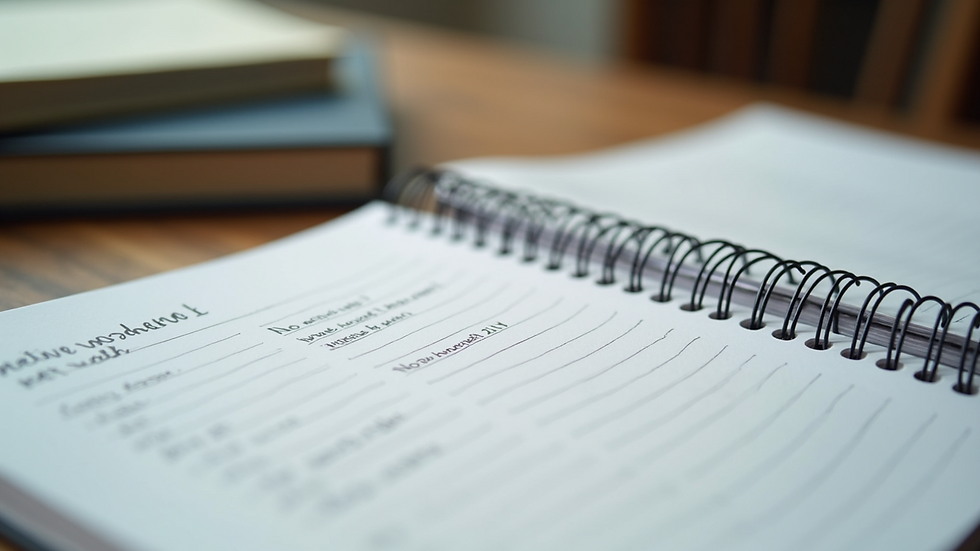Key Strategies for IELTS Academic Task 1
- Izzy
- Aug 11
- 4 min read
Preparing for the IELTS Academic Writing Task 1 can feel a bit daunting at first. But don’t worry! With the right strategies, you can tackle this task confidently and boost your score. I’m here to share some practical tips and clear advice that will help you understand what examiners are looking for and how to deliver your best response. Let’s dive in and make this part of the test a breeze!
Understanding the Task and What’s Expected
Before you start writing, it’s crucial to understand exactly what IELTS Academic Task 1 requires. You will be given a graph, chart, table, diagram, or map, and your job is to describe the information clearly and accurately. The key is to summarise the main points, compare data where relevant, and avoid giving your opinion.
Here’s what you should focus on:
Identify the type of visual data: Is it a bar chart, line graph, pie chart, or something else? Knowing this helps you decide how to organise your description.
Highlight key trends and differences: Look for the highest and lowest points, any noticeable changes over time, or interesting comparisons.
Avoid unnecessary details: Don’t try to describe every single number. Instead, focus on the most important information that tells the story.
Use your own words: Paraphrase the question prompt to show your language skills.
By understanding the task clearly, you’ll save time and write a more focused response.

Essential IELTS Writing Task Tips for Success
Now that you know what the task involves, let’s talk about some essential tips to help you write a strong response.
Plan Before You Write
Planning is your best friend. Spend 3-5 minutes analysing the visual data and jotting down the main points you want to include. This will help you organise your ideas logically and avoid getting stuck halfway through.
Structure Your Answer Clearly
A clear structure makes your writing easier to follow. Use this simple format:
Introduction - Paraphrase the question.
Overview - Summarise the main trends or features.
Details - Describe specific data points and comparisons.
Conclusion (optional) - Briefly restate the main trend if needed.
Use a Range of Vocabulary and Grammar
Variety is key. Use different words to describe trends (e.g., increase, rise, grow, climb) and avoid repeating the same phrases. Also, mix simple and complex sentences to show your language skills.
Keep It Formal and Objective
Remember, this is an academic task. Avoid personal opinions or informal language. Stick to facts and use a neutral tone.
Check Your Work
If time allows, quickly review your writing for any grammar or spelling mistakes. Small errors can affect your score, so it’s worth a quick check.

How to Describe Different Types of Visual Data
Each type of visual data has its own quirks. Here’s how to approach the most common ones:
Bar Charts and Column Graphs
Compare the heights of bars.
Mention the highest and lowest values.
Talk about any noticeable differences between categories.
Line Graphs
Focus on trends over time.
Describe increases, decreases, and any fluctuations.
Highlight significant peaks or drops.
Pie Charts
Discuss proportions and percentages.
Compare the sizes of different slices.
Mention the largest and smallest segments.
Tables
Summarise key figures.
Compare data across rows and columns.
Point out any patterns or anomalies.
Maps and Diagrams
Describe changes in location or layout.
Use directional language (e.g., north, south, adjacent to).
Explain processes step-by-step if it’s a diagram.
By tailoring your description to the type of data, you’ll make your writing clearer and more effective.

Practical Tips to Boost Your Writing Speed and Accuracy
Time management is crucial in the IELTS exam. Here are some practical tips to help you write faster without sacrificing quality:
Practice regularly: The more you practice, the quicker you’ll get at identifying key points and organising your ideas.
Use templates: Develop a few go-to sentence structures for introductions, overviews, and comparisons. This saves time during the exam.
Focus on clarity: Don’t try to use overly complex language if it slows you down. Clear and correct writing is better than complicated but confusing sentences.
Avoid copying data: Instead of writing numbers exactly as they appear, try to summarise or round them to make your writing smoother.
Stay calm: If you feel stuck, move on and come back later if you have time. Don’t let one part eat up all your time.
Remember, practice makes perfect. Try writing responses to different types of visuals and time yourself to build confidence.
Why Using Reliable Resources Makes a Difference
One of the best ways to improve is by learning from trusted sources. For example, I highly recommend checking out ielts writing academic task 1 for detailed explanations, sample answers, and useful tips. These resources give you a clear idea of what examiners expect and how to meet those expectations.
Using reliable materials helps you:
Understand the marking criteria.
See examples of high-scoring answers.
Learn useful vocabulary and phrases.
Get practical advice on common mistakes to avoid.
Combining these resources with your own practice will give you a solid foundation to succeed.
Final Thoughts on Mastering IELTS Academic Task 1
Getting a good score in IELTS Academic Task 1 is all about preparation and strategy. By understanding the task, planning your response, using clear language, and practising regularly, you’ll improve steadily. Remember to stay positive and keep your writing focused on the data. With these key strategies, you’re well on your way to acing this part of the exam!
Good luck, and happy writing!





Comments